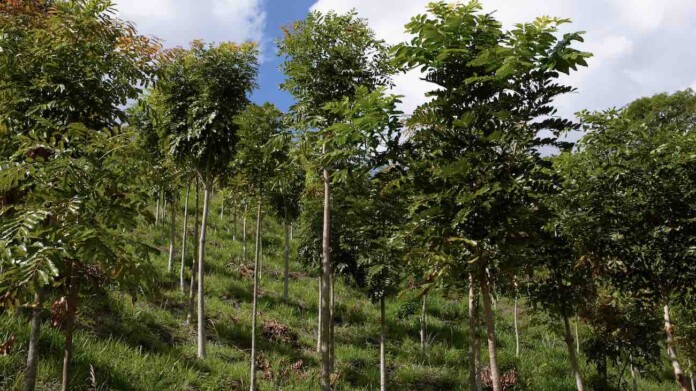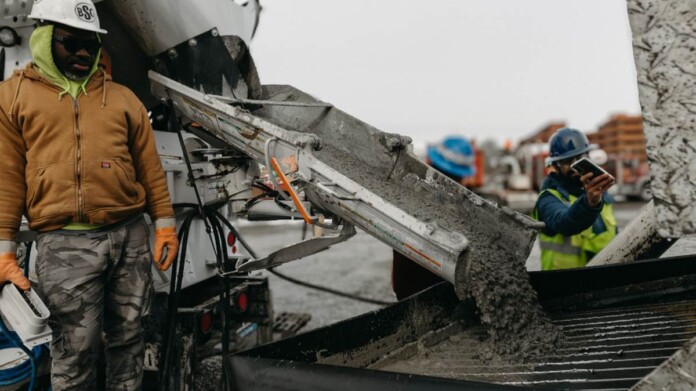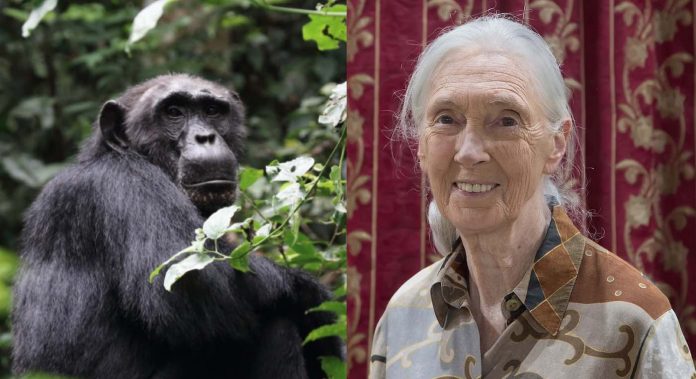59 years ago today, the first commercial communications satellite, Intelsat I, was placed in geosynchronous orbit. The tiny 2-foott device (nicknamed Early Bird for the proverb “The early bird catches the worm”) was the first to provide direct and nearly instantaneous contact between Europe and North America, handling television, telephone, and fax transmissions. READ about its development… (1965)
Wheels for Winners Gives Hundreds of Free Bikes to Wisconsin Youth in Exchange for Community Service

In one of America’s most cycling-friendly cities, a volunteer group is rewarding anyone who puts in time serving the community with a brand old-new bicycle.
Wheels for Winners only asks that applicants provide evidence that they completed 10 hours of community service for any organization in Maddison, Wisconsin.
After that, it’s a simple matter of showing up, selecting a bike, and riding off into the sunset.
Relying on donated bikes for parts, Chairman of the Wheels for Winners Board Neil McCallum, says that bikes are completely restored, dismantled for parts, or donated to other partners. Not a single one goes to waste.
“We turn out about 400 bikes a year, but we take in probably 750 bikes,” said McCallum. “What we’re trying to do here is allow young people that might not be able to afford a bike to have a bike with just a little bit of ‘sweat equity.'”
Sweatquity has a ring to it; maybe something McCallum should consider.
Wheels for Winners isn’t alone in its admirable operations, and as a 501(c)3, receives support from the community at a tax-free level, and even received a generous grant recently from American Family Insurance.


“We distributed 175 bikes to earners, and an equal amount to support community biking events,” said another board member, Richard Castelnuovo, in a video put out by American Family.
MORE CYCLING NEWS: He Finds Stolen Bicycles–Then Helps Thieves Change: Iceland’s ‘Bike Whisperer’
Last year they held 12 events, at the heart of which was their mobile bike library and team of volunteer mechanics, that give away bikes and tune-ups to kids in various neighborhoods.
Wheels for Winners members are quick to point to the smiles on children’s faces when they receive their new bike, and point out that the liberty a bike provides makes it a semi-seminal moment in any child’s life.
Typically the ‘earners’ are those in the community who can’t outrightly afford a bike.
WATCH Wheels for Winners in action below…
SHARE This Inspiring Volunteer Work With Your Friends…
Joyous New York City Coffee Shop Hires and Trains People with Autism and Down Syndrome

While a cup of joe from Cafe Joyeux is a normal experience in European cities, this radical and tremendous coffee chain just opened its doors in the Big Apple.
Located at 599 Lexington Avenue, East 52nd Street, the first American Cafe Joyeux employs crew members with intellectual and developmental disabilities, empowering them through meaningful training and employment.
With Autism Awareness Day having just passed, it’s the perfect time to go for a coffee there.
It’s a beautiful thing to see the average Joe helping out his neuro-divergent neighbors, but as humans are a communal species of social primates, few things can empower a person as much as the vote of confidence that they are worthy and capable of performing gainful, meaningful employment.
To that end, and whether it’s broad-spectrum autism or Down Syndrome, the staff at Cafe Joyeux are trained and expected to perform like any other employee, something which Rachael Barcelona told CBS News “changed her life.”
“I’ve been rejected so many times and told I was a burden because of my autism,” she said, describing the shock she had when someone offered her a job, “and I was going to get paid too!”
Founded by a French social entrepreneur, there are 20 Cafe Joyeux across the Old World, a number most Americans will agree would be joyeux to see here Stateside.
WATCH the story from CBS’ ‘Heart of America’… To Viewers Outside the US, WATCH here…
SHARE This Cafe And Its Inspiring Mission With Your Friends…
Destructive Gold Miners Work Overtime to Restore Thousands of Acres of Amazon Rainforest
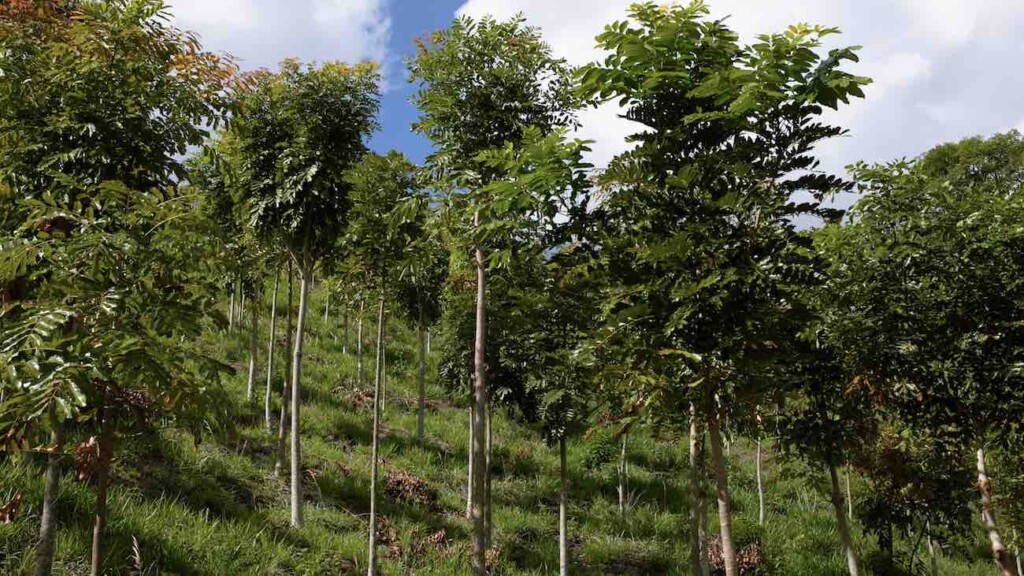
In the Madre de Dios region of southern Peru, small, artisanal gold mines and the miners that work them have become a source of inspiring environmental work.
Once slashing and burning tens of thousands of acres of jungle in search of gold which they extracted with mercury, they’re now focused on restoring the land they excavated by planting a biodiverse rainforest—and swapping the toxic mercury for more sanitary methods of mining.
Behind the project is the environmental NGO Pure Earth which sought to achieve with a delicate touch what local and national governments failed to achieve with aggressive legislation and police raids.
Realizing that the miners, despite coming mostly from the Andes regions, took no pleasure in the clearing of pristine tropical rainforest, and that even after the price of gold skyrocketed following the 2008 Financial Crisis, they were operating on “a lot of stick but not much carrot,” Pure Earth gradually gained their trust enough to set up a pilot program.
“It feels good to see the forest grow back,” Pedro Ynfantes, a 66-year-old miner whose legal mining concession of 1,110 acres included a 10-acre patch of land for the pilot program, told NPR. “We don’t want to deforest. When we had the opportunity to let the forest grow back, we took it. It’s much better this way.”
There are dozens of understory and canopy species growing now and Ynfantes’ land, each tagged with scientific and local names in order to raise just a little bit the collective sense of knowledge and responsibility the miners have while operating in the mighty Amazon.
Bordering Brazil, Bolivia, and the other Peruvian parts of the Amazon Basin, Madre de Dios is almost entirely Amazonian rainforest, and contains a variety of tribal groups who live in large forest reserves, and, according to legend, a lost city of the Inca. More tangibly, it is a stronghold of biodiversity for the western reaches of the Amazon Basin and an emerging tourist destination.
MINING STORIES: Officials in Zambia Unite to Halt Mining Permits in Pristine Wilderness in Africa
It isn’t only for the sake of Western-style environmentalism that the miners are replanting on their concessions, but also for the sake of the health of the community. Madre de Dios, and Peru more generally, suffers from some of the highest rates of mercury poisoning in the world, causing developmental delays for children and other neurological problems, as well as significant damage to the lungs and kidneys, and immune system dysfunction.
Recently, Pure Earth helped four artisanal and small-scale gold mining communities in Madre de Dios achieve the internationally-recognized Fairmined Certification, which proves their mining efforts are minimally damaging to the environment and human health by pairing their reforestation efforts with a switch away from using mercury to extract gold.
MORE RESPONSIBLE EXTRACTION: As the World Runs on Lithium, Researchers Develop Clean Method to Get It From Water
Since 2014, 1,7 tons of certified gold have been sold to the international market, empowering more than 3,000 miners from certified mining organizations, according to Pure Earth. In return for their commitment to responsible mining practices, mining organizations have received more than 7 million dollars of Fairmined premium.
This substantial economic recognition not only validates their dedication but also serves as a compelling incentive for continued investments in technical enhancements that make mining gold a minimally invasive procedure.
WATCH a short video of one of the mining sites below…
SHARE This Inspiring Story Of Responsible Miners Changing Their Practices For The Sake Of Us All…
Experts Find a 1,000-Year-old Ice Skate Made of Animal Bone in Czech Republic
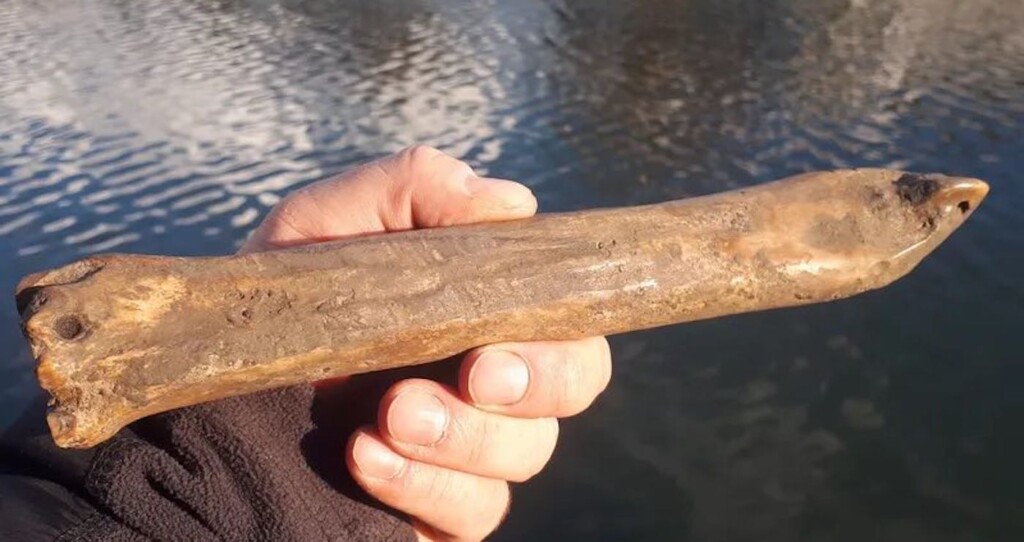
From the Czech Republic comes a fascinating archaeological find—a 1,000-year-old ice skate blade made of a horse’s shinbone.
Located during excavations of a cellar in the city of Přerov, it was designed to be tied with leather straps to a boot sole.
In the early Middle Ages, Castle Přerov was situated on a mound on the left bank of the River Bečva in Moravia, Czechia. It was a very important medieval stronghold at the crossroads of long-distance trade routes linking east and west, south and north.
To that commercial end, residents needed a way to move across the broad river in the wintertime, and would have carved skates like these out of animal bones.
Archaeologist Zdeněk Schenk, Ph.D., from the Comenius Museum in Přerov who found the skate, explained that they were typically made from metapodia or the radii bones of cattle and horses.
“The object has a specific shape. On one side, it is curved into a tip which has a hole drilled in it and there is another hole at the back,” Dr. Schenk told Radio Prague International. “They were used to thread a strap through, which was used to attach the skate to a shoe or to a wooden sled.”
“I was born in Přerov. I remember when I was a child, I enjoyed with my friends ice skating over the frozen Bečva River,” Schenk told GNN. “My mom and daddy and grandparents skated there before, so it’s a long tradition. But, what is surprising is that our ancestors skated over the frozen Bečva River 1,000 years ago.”
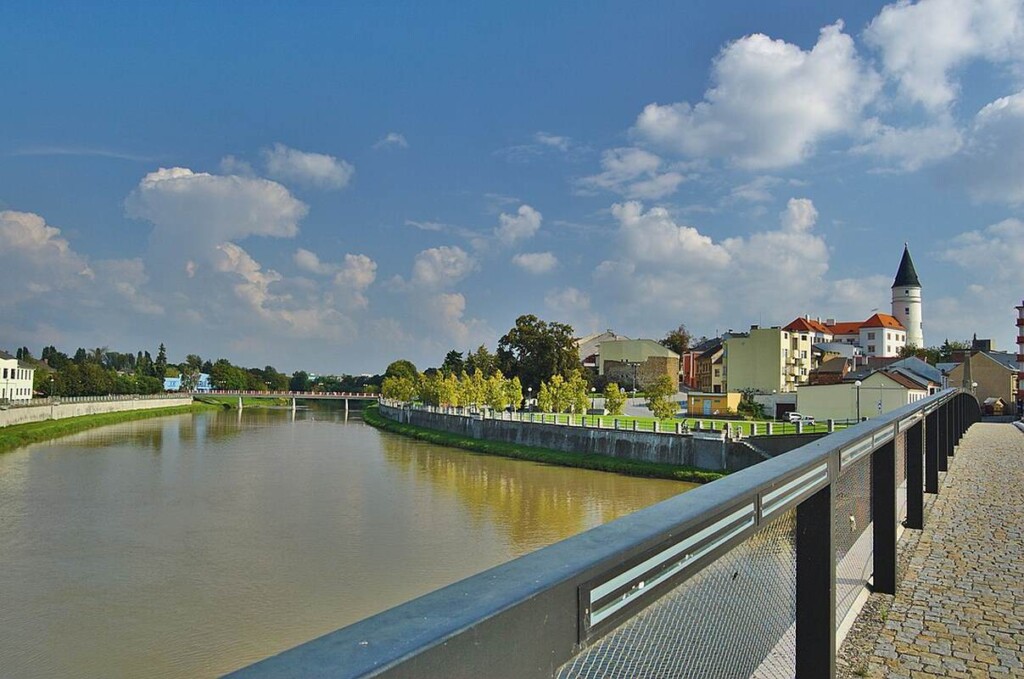
Schenk believes that they would have used wooden poles to shuffle themselves along inch by inch rather than actually skating as we imagine it today. The activity itself is older than the 1,000-year date of this skate.
The find is nearly identical to skates recovered in Northern Europe, “for example from Birka in Sweden a very famous archaeological site from the Viking Age,” Schenk said, “also from York in England or Dublin in Ireland.”
While for us the activity is purely recreational, a thousand years ago it was just an easier way to move across the landscape.
SHARE This Look At The Ancient Origins Of A Beloved Pastime…
“Of all possessions a friend is the most precious.” – Herodotus
Quote of the Day: “Of all possessions a friend is the most precious.” – Herodotus
Photo by: Joel Muniz
With a new inspirational quote every day, atop the perfect photo—collected and archived on our Quotes page—why not bookmark GNN.org for a daily uplift?

Good News in History, April 5
On this day, 26 years ago, the Akashi-Kaikyo Bridge opened to traffic linking the City of Kobe on the main island of Honshu, to the offshore Awaji island. When it was finished, it boasted the longest central span of any suspension bridge in the world. Between the security of the first tower, the bridge proceeds another 1.2 miles across the turbulent Akashi Strait before reaching the second tower, a span which, if you read more, you will see is actually very long indeed. READ some stunning engineering facts… (1988)
Global Life Expectancy Rises by 6.2 Years After Drop in Deaths from Stroke, Diarrhea, and Respiratory Infections

Reductions in deaths from leading killers in the developing world such as as diarrhea, lower respiratory infections such as bronchitis and pneumonia, and stroke, have raised the global life expectancy by more than six years since 1990, a new study has revealed.
Improved healthcare and better disease prevention also helped people live longer, until government-mandated lockdowns and business closures disrupted the global supply chains and reversed this trend during the pandemic years.
Researchers from the Institute for Health Metrics and Evaluation (IHME) studied causes of death around the world over the last three decades and analyzed how global life expectancy changed during that period.
They found that overall, life expectancy is up by 6.2 years since 1990, with the most pronounced reduction in deaths recorded between 1990 and 2019 in Oceania, East Asia, and Eastern sub-Saharan Africa.
This was driven by a sharp drop in deaths from enteric diseases—including diarrhea and typhoid—and significantly reduced mortality from lower respiratory infections.
Eastern sub-Saharan Africa experienced the largest life expectancy increase of 10.7 years.
The super-region of Southeast Asia, East Asia, and Oceania saw the second-largest net gain in life expectancy with 8.3 years, largely due to drops in deaths from stroke, lower respiratory infections, chronic respiratory diseases, and cancer.
The area’s management of the pandemic also helped preserve its life expectancy gains, the team said.
South Asia was the super-region with the third largest net gain with 7.8 years, which has been attributed to a steep decline in deaths from diarrheal diseases.
The study, published in The Lancet, also highlights how COVID-19 altered the top five causes of death for the first time in 30 years—replacing a long-dominant killer, stroke, to take second place.
Researchers found that the super-regions of Latin America, the Caribbean, and sub-Saharan Africa were hit the hardest by the pandemic, losing the most years of life expectancy in 2021.
OTHER BIG RESEARCH: Analysis Shows We’ve Been Overestimating the Amount of Plastic in Oceans by 30x
Dr. Liane Ong, co-first author of the study and a Lead Research Scientist at IHME, added that the study can help scientists deepen their understanding of death-reduction strategies and offer more information on what kinds of public health interventions are successful.
The study’s findings also revealed which diseases have become more concentrated in certain locations, which co-first author Professor Mohsen Naghabi, the Director of Subnational Burden of Disease Estimation at IHME, said can help with prevention and treatment.
“Our study shows that in 2021, deaths from enteric diseases were largely concentrated in sub-Saharan Africa and South Asia,” said Naghabi.
MORE HEALTH TRENDS: Cape Verde Becomes the First African Country in 50 Years to Eradicate Malaria
“Likewise, 90 percent of deaths from malaria occurred in an area inhabited by just 12 percent of the world’s population: a stretch of land ranging from western sub-Saharan Africa through central Africa to Mozambique.”
“We already know how to save children from dying from enteric infections including diarrheal diseases, but now we need to focus on preventing and treating these diseases,” he added.
SHARE News Of These Billions Of Added Years Of Life With Your Friends…
Subtle, Imperceptible Tweaks at HarperCollins have Saved 245 Million Pages–Equal to 5,618 Trees

At HarperCollins, a lot of attention and thought is given to deciding exactly what combinations of margin measurements, font, and layout feel most appropriate for the genre, and writing style.
But in a case of do-your-part environmentalism, designers at the publishing house have now standardized a series of subtle and imperceptible alterations to normal font style, layouts, and ink that have so far removed the need for 245 million book pages, totaling 5,618 trees.
Telling the story in Fast Company, representatives from HarperCollins, one of the four largest publishing houses in the world, explained that the idea first arose in Zondervan Bibles, HarperCollins’ Christian publishing division. Being that the Bible is 2,500 pages or sometimes more, saving ink and pages was not just an environmental consideration, but one of production costs.
A new typeface called NIV Comfort Print allowed Zondervan to shave 350 pages off of every Bible, which by 2017 had amounted to 100 million pages, and which, as Fast Company points out, would be four times higher than the Empire State Building if stacked.
The production and design teams then wondered how much they could save if they applied the same concepts to other genres like romance and fiction. Aside from the invention of the eBook, publishing hasn’t changed much in the last 100 years, and the challenge was a totally novel one for the teams—to alter all their preconceived ideas and try and find a font and typeface that resulted in fewer pages without being harder to read.
YOU MAY ALSO LIKE: Danish Company Creates Children’s Book to Make Ukrainian Refugees Feel at Home – And it’s Adorable (LOOK)
They eventually standardized 14 different combinations their tests determined were the most environmentally friendly, and which delivered an unchanged reading experience.
But the challenge didn’t stop there. Printed books, one might not know, are printed in large sheets which are then folded into sections of sixteen pages, meaning that Leah Carlson-Stanisic, associate director of design at HarperCollins, has to calculate the savings of space, words, and ultimately pages with the help of her team to fall in multiples of sixteen.
MORE CORPORATE TREE-COST CUTTING: Lumber Company Grows Trees That Smile With Massive Grin for Oregon Drivers
Nevertheless, they have been successful with it so far, and in the recent print run of one popular book, 1 million pages (or a number near 1 million that coincides with the 16 times tables) were saved.
“We want to make sure our big titles, by prominent authors, are using these eco-fonts,” Carlson-Stanisic said. “It adds up a little bit at a time, saving more and more trees.”
SHARE This Excellent Bit Of Corporate Responsibility And Innovation…
Ming Dynasty Tomb of an Imperial Official Discovered in Exquisite State of Preservation
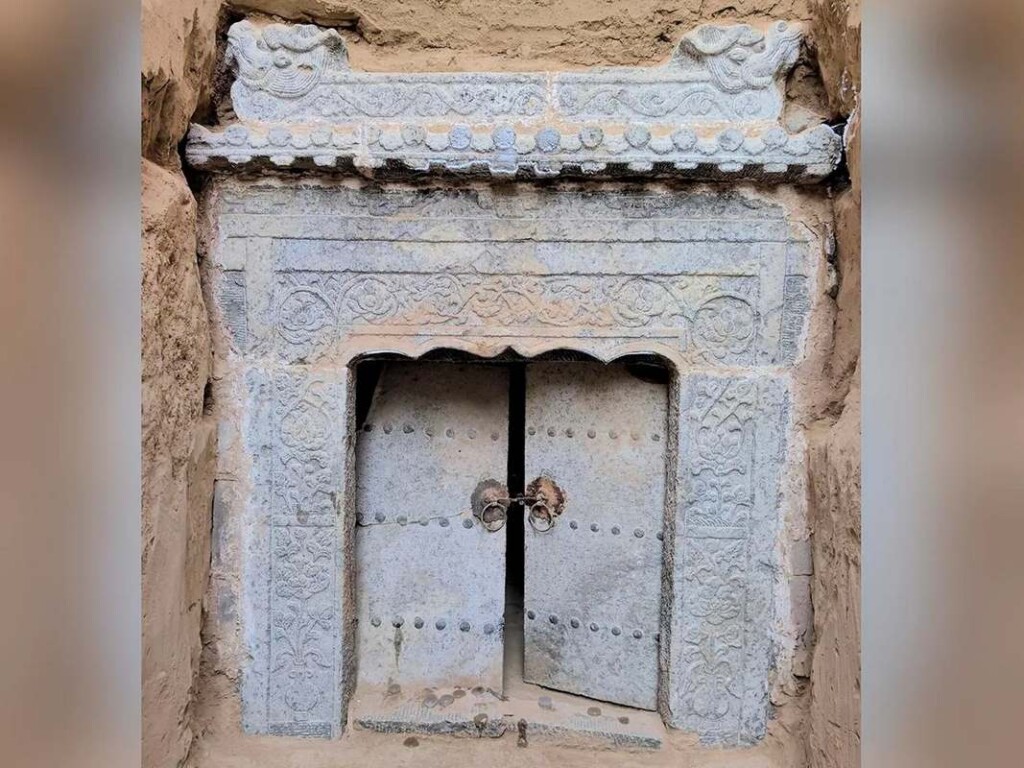
A tomb dating to the middle of the Ming Dynasty has been excavated in the Chinese province of Shanxi, revealing a wealth of exquisitely preserved funerary objects that tell the story of imperial life.
Belonging to a court official, even the exterior facade of the tomb is in excellent condition, and Chinese archaeologists state the discovery is exceptionally rare.
Wang Luo had great taste when he administered the city of Xinzhou on behalf of the imperial civil service, and this is reflected in the wealth of wood and ceramic objects that decorated his tomb, inscribed in his honor.
“Entrusted by the Ming dynasty to serve the royal court as a palace official,” read his coffin of tan wood painted with diamonds and flowers.
All around the tomb were signs of high office. An ornate wooden desk and chair sat in one of the chambers, on which were candlesticks, incense burners, painted wooden figurines, ink stones, brushes, and brush holders. A gorgeous chair of lacquered wood with gold and black designs and a dragon image sat behind the desk.
Other tables had ceramic and stone bowls and pots, that in their great state of preservation, give the appearance it wasn’t long ago that a meal was shared on them.
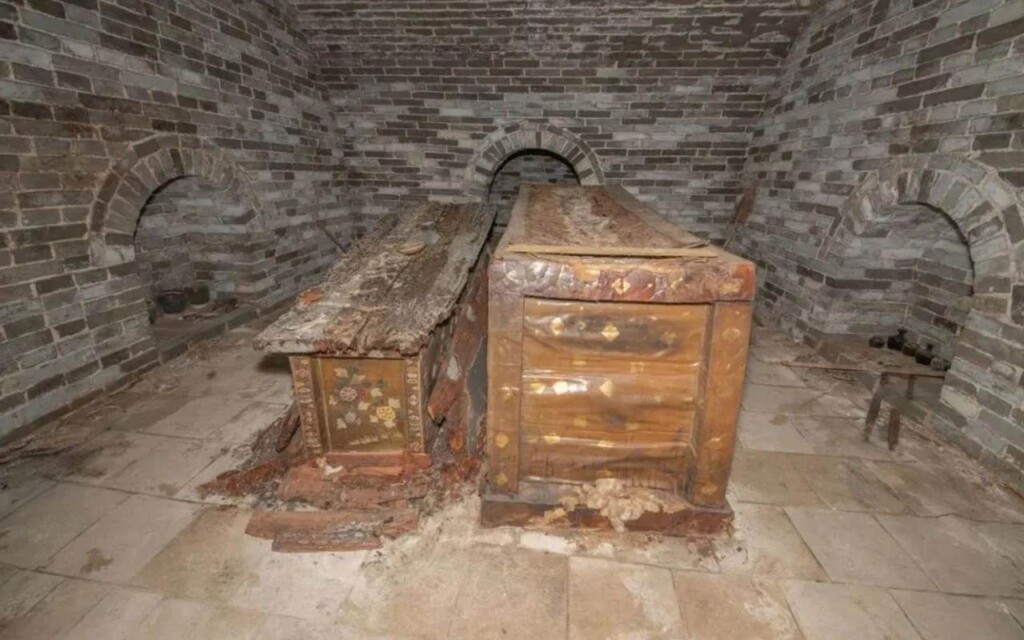
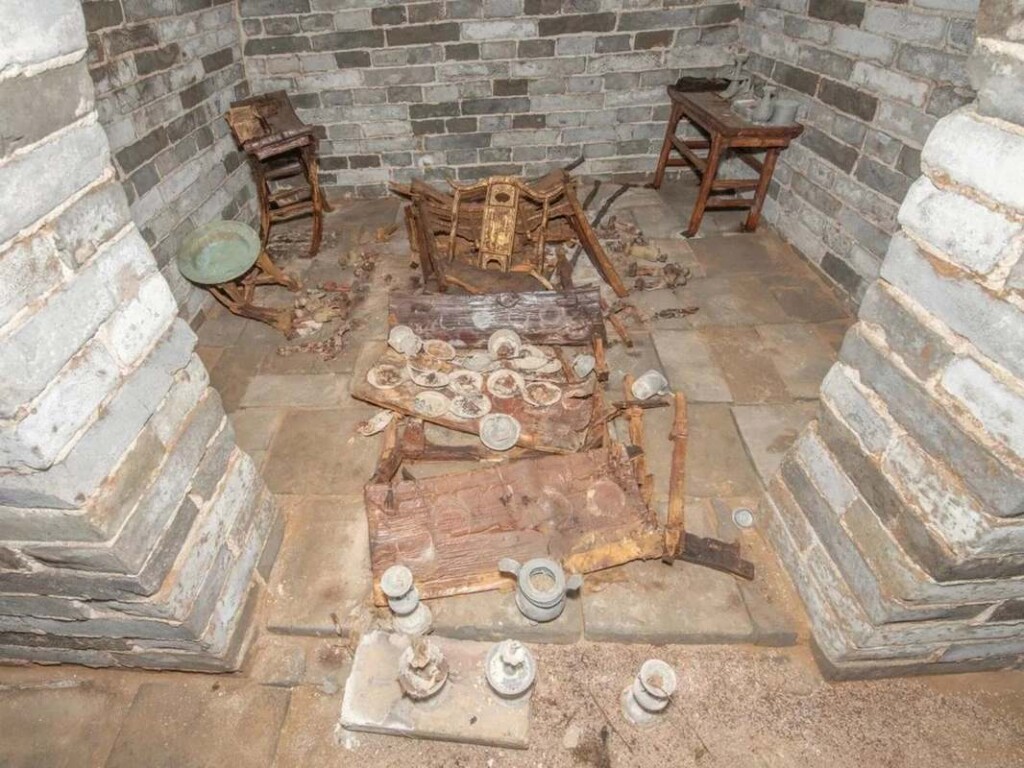
“It is rare in Xinzhou and even the entire province. It provides precious physical information for studying the local Ming dynasty tomb shape, social life, and burial customs,” wrote the scientists in an announcement about their discovery.
The tomb was found as part of a monumental discovery in Xinfu District that identified a sort of “Valley of the Officials” to borrow from the famous Egyptian Valley of the Kings.
66 tombs, dating as far back as the nearly Neolithic Longshan Culture, through to the Warring States Period, and onto nearly all of the most important imperial dynasties, including the Han, Tang, Jin, Yuan, Ming, and Qing dynasties, covering around 1,500 years.
OTHER CHINESE DISCOVERIES: 1,500-Year-Old Skeletons Found Locked in Loving Embrace Might Have Been ‘Romeo and Juliet’ Ending in China
They were discovered during the realignment of China’s National Highway 108, and Wang Luo’s tomb was found on a brick terrace near the village of Hexitou.
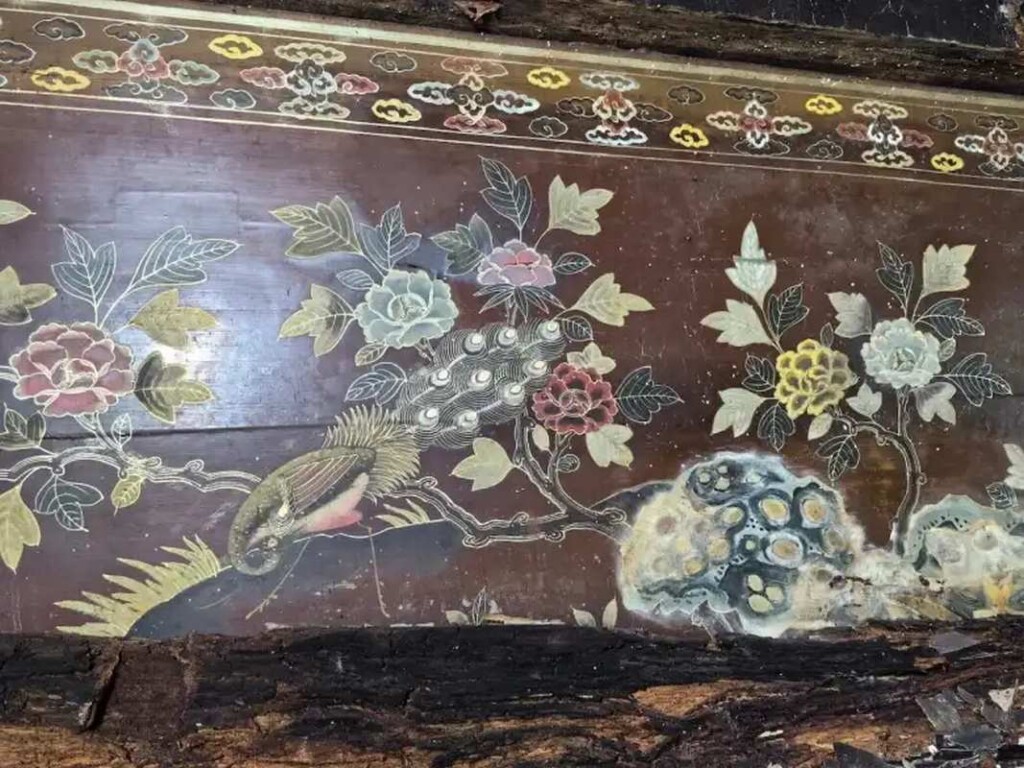
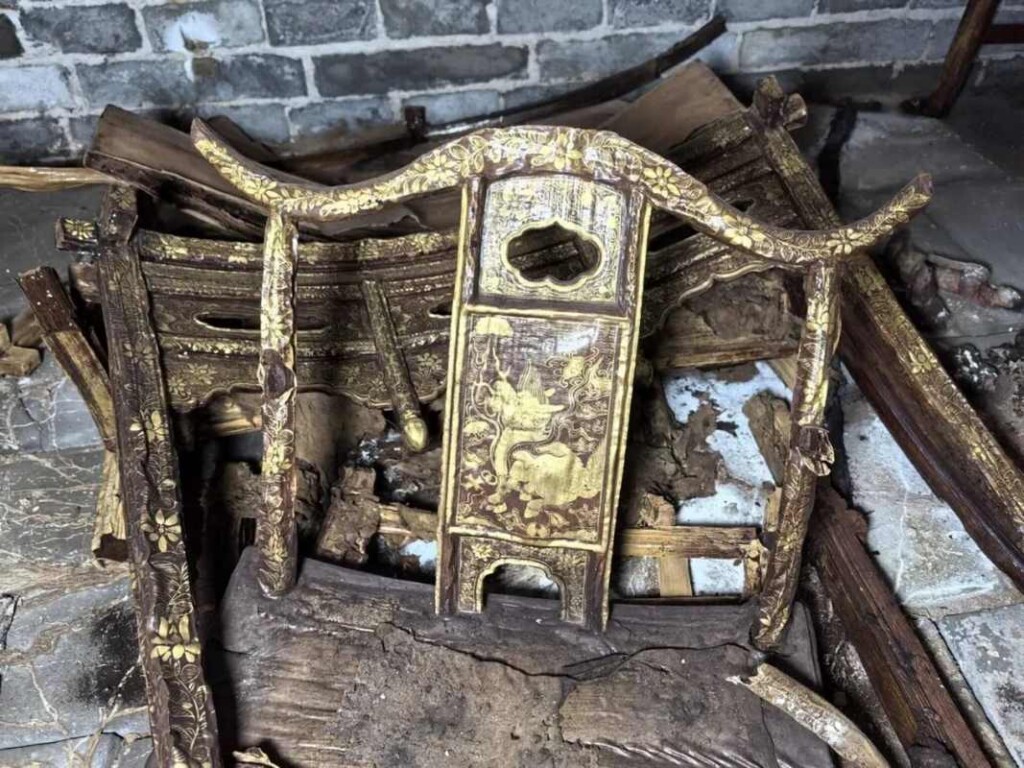
Shaped like an addition sign, the exquisite stone doors and portico are carved with interlacing flowers. A corridor runs to a central chamber, the length of which is around 75 feet.
Niches stand on each side of the chamber, and a larger, rear chamber containing the desk and most of the funerary goods also includes a stone stele with Wang’s epitaph, which contains some curious life advice carved in the Zhuan script, as well as personal information.
“Those who have borrowed money to become prosperous should not be arrogant,” the epitaph read, adding that Wang was the third youngest brother of a famous palace eunuch named Wang Zhi.
SHARE These Gorgeous Photos With Your Friends Who Enjoy Chinese History…
Premiere of Innovative Low-Carbon Cement: Will ‘Be in That Building for Decades to Come’
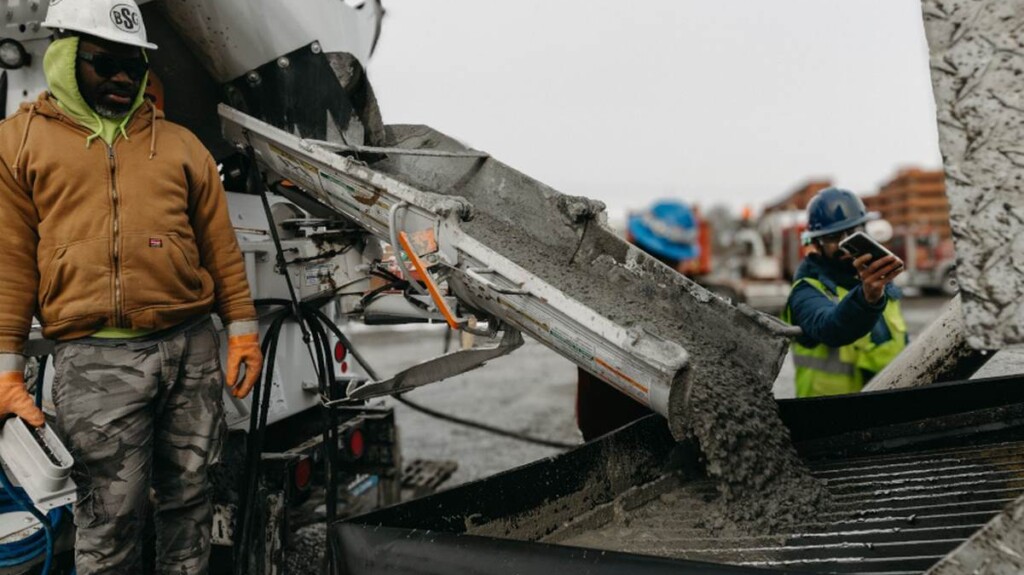
Two firms in Boston have just laid the foundations of a large building using a USA-made zero-carbon cement mixture, representing one of the first adoptions of this technology in the real world.
Many companies are testing or subsidizing low/zero carbon cement and concrete hoping to reduce their carbon footprint, but few as yet are using it liberally to build real structures.
Manufactured by Sublime Systems, which was just named to Fast Company Magazine’s Most Innovative Companies in Sustainability for 2024, the firm uses an electrochemical process to create the cement for ready-mix products.
At the heart of traditional Portland and other kinds of cement is its heating in a kiln wherein calcium carbonate reacts with silica-bearing minerals to form a mixture of calcium silicates. Over a billion tonnes of cement are made per year, and cement kilns are the heart of this production process: heating the mixture to over 1,300°C and producing around 5% of all made-made carbon emissions worldwide, according to The Economist.
By eliminating the kiln altogether, Sublime Systems has removed the large majority of emissions from the process.
Best of all, it’s actually being used right now in the Greater Boston Area. Boston Sand & Gravel is supplying Turner Construction Co. with ready-mix cement containing Sublime Systems’ product to form the mud mat of a large building.
“It’s going to be in that building for decades to come,” Leah Ellis, Sublime Systems’ CEO, told Engineering News Record.
YOU MIGHT ALSO LIKE: Microsoft Campus Set to Use Geothermal Energy to Heat/Cool Millions of Sq Ft. of Office Space
“It really was the culmination of a lot of effort to see it not just being done for testing’s sake, but actually, replacing cement that would otherwise have been the carbon-intensive variety.”
Along with reducing the carbon emissions budget of that new building, the construction has validated that several key targets of Sublime Systems’ product have been met: the product was transported to the site in a ready-mix concrete truck like normal, maintained malleability during transit, was poured out of the concrete truck and into a hose, and the hose was able to deliver it to the setting where it stuck and hardened—all exactly like traditional cement.
MORE RENEWABLE BUILDING: Concrete Made 30% Stronger by Adding Waste Coffee Grounds–Cutting Emissions and Mining in the Process
“In the grand scheme of things, it was, really, very boring for construction,” David Robb, a Turner estimator and the preconstruction manager on the Boston-area project, told ENR. “But it’s it’s a huge step in terms of our embodied carbon reduction goals that we’re striving toward in the future here at Turner.”
Government money as well as private investment has been pouring into Sublime Systems’ which seems poised to lead a great revolution in cement by building its first full-scale, dedicated manufacturing facility in Holyoke, Mass.
SHARE This Great Advancement In Green Construction With Your Friends…
“Anyone who has never made a mistake has never tried anything new.” – Albert Einstein
Quote of the Day: “Anyone who has never made a mistake has never tried anything new.” – Albert Einstein
Photo by: Todd Quackenbush (cropped)
With a new inspirational quote every day, atop the perfect photo—collected and archived on our Quotes page—why not bookmark GNN.org for a daily uplift?

Good News in History, April 4
60 years ago today, Beatlemania was in full bloom as the band held every one of the top five spots on the US singles chart. The Beatles packed the Billboard Hot 100 with Please Please Me, I Want To Hold Your Hand, Roll Over Beethoven, Love Me Do—and at No.1 Can’t Buy Me Love. The Fab Four also had another nine songs lower on the chart, bringing their unprecedented total to fourteen, after having arrived in the U.S. two months earlier for a tour. READ more… (1964)
Must-Have Travel App Offers Peace of Mind, Averting Any Crisis with Real-Time Advisories and Personal Response Team

When I was young, backpacking through Europe with my sister, we took a train into Paris completely unaware that the Seine had flooded the city, and the train workers were on strike.
Most travelers lack immediate access to travel intelligence information or communication capabilities that may be critical in the event of a travel, medical, or security emergency, and for that reason, the Global Rescue Intelligence Delivery system app (GRID 2.0.) is winning awards.
Global Rescue is the undisputed world leader in providing medical, security, evacuation, and travel risk-management services for business or charity workers—and even young backpackers.
A membership with Global Rescue means you have the ultimate red button to press in case of an emergency—whether that’s a broken leg on a remote mountaintop, or being stranded by a natural disaster. Global Rescue’s staff of military veterans, paramedics, intelligence experts, and translators are on standby to help at all times, whether that’s a telehealth diagnosis or an emergency field evacuation.
And it’s all covered under the same membership cost, without co-pays, without deductibles, without coverage networks, and without claim forms.
Also included in the membership is the GRID 2.0 app, not available on Apple or Google Play, which distributes targeted notifications and alerts to individuals who could be impacted by events including civil unrest, disease-related developments, safety issues, transportation disruptions, communications blackouts, and natural disasters such as floods, hurricanes, earthquakes, and volcanic activity.
For a concerned parent, the membership not only gives unparalleled protection for a charge far from home, but also the ultimate way to keep track of their journey and minimize risk.
“It is the world’s only integrated medical and security mobile app for travel risk, asset tracking, intelligence delivery, and crisis response management. Last year more than a million targeted event alerts were distributed to individuals who could be affected by more than 10,000 global events reported,” said Dan Richards, CEO of Global Rescue.
MORE SMART TRAVEL STORIES: Some of the Best National Parks Where You Can Avoid the Summer Crowds
The GRID 2.0 system is comprised of two parts to reduce traveler risk. The Individual Traveler Mobile App and the Desktop Administrator Control Center work together to help individuals, organizations, companies, and universities protect, track, and communicate with remote travelers, employees, and students.
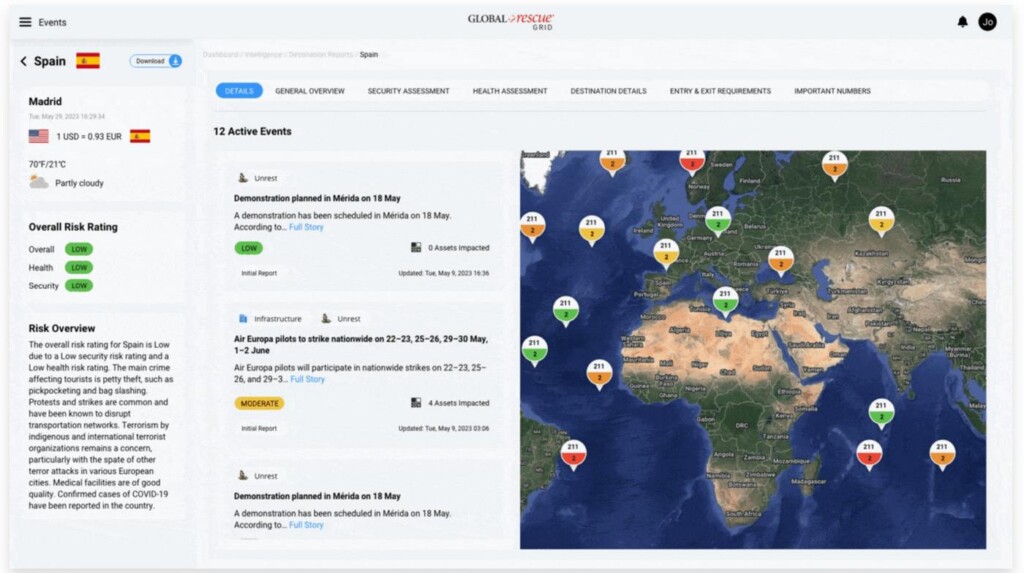
Travelers using the GRID 2.0 Individual Traveler Mobile App can research medical and security risks by destination, obtain automatic Destination Reports, receive active security alerts including analysis and advice, connect for GPS “check-ins” with real-time location tracking, and stay in touch with in-app communications both internally and with Global Rescue, making it the ultimate choice for traveling in unstable regions or nations.
Back at home, headquarters, or wherever the traveler is striking out from, those using the Desktop Administrator Control Center can keep in contact with individual app users, keep watch on their locations, monitor real-time global threats and analysis with Event Alerts, and get comprehensive assessments of global risks that might affect app users 24/7/365.
“In an emergency, the GRID 2.0 app puts its users in immediate contact with the medical teams and military special operations veterans who staff Global Rescue’s Global Operations Centers,” said Harding Bush, associate director for Global Rescue security operations.
OTHER APP REVIEWS: Popular Hiking App Releases 27,000 Trail Maps to Download for Free, Increasing Hiker Safety
A membership to Global Rescue that includes the app starts at $319 for one year of unparalleled security and risk management.
Global Rescue was added to Fast Company’s prestigious list of the World’s Most Innovative Companies of 2024 as a result of the successful launch of GIRD 2.0. Over 2,000 NGOs, tour companies, and government agencies use Global Rescue to secure their overseas travel.
Over 1 million private individuals use Global Rescue, which having just entered its 20th year of business, has conducted just over 25,000 operations, including evacuations and rescues during some of the world’s most challenging crises.
SHARE This Amazing App And Service For Travelers You Know…
Hotel Excavation Reveals Medieval Castle with Moat and Stones That Look Like They Were Laid Yesterday

The stunningly well-preserved remains of a castle have been dug up in the French city of Vannes, Brittany, at the foot of a private hotel.
The operation was carried out as part of preventive archaeology prior to the construction of the future Museum of Fine Arts of the City of Vannes, and while the owners knew that a medieval structure existed under the Hôtel Lagorce, the scope and preservation of it were a grand surprise to everyone involved.
The first phase of the project took place between February and April 2023 in the cellars and courtyard of the hotel which was originally a private mansion built at the end of the eighteenth century.
The courtyard had been built atop an embankment 13 feet deep (4 meters). Down below, archaeologists unearthed two stories of what was probably a four-story castle that measured 140 feet long and 55 feet wide overall. Connected to additional defensive elements, it would have been even larger.
Historical records all but confirm the castle was Château de l’Hermine, constructed by the Duke of Brittany in 1380 following the end of one of the many wars between French royals. It was part of a large public works program that doubled the size of the city of Vannes, but was abandoned by the Duchy in favor of Nantes in 1470, before becoming ruins in the 17th century.
The excavation was handled by Inrap, the national institute for archaeological excavations for the state of France.
A central passage connects the north gate, built into the façade on the city side, to another gate framed by two large towers that once made up a section of the city rampart overlooking the outer moat, all of which was identified on very old architectural plans of the city.
They unearthed several staircases, including a remarkably well-preserved ceremonial staircase with a decorated core, several intact steps, and a sitting window. In the skeleton of the exterior masonry at each end of the house, the archaeologists also identified a set of latrines and drainage pipes that served the upper two floors.
YOU MIGHT ALSO LIKE: 4,200-Year-Old Ceramic Storm Drains in Ancient Chinese Town Are the Oldest of Their Kind
Also identified were the foundations of a watermill, placed “in a very original way” at the corner of the castle near a square tower. A canal brought water from the River Marle to drive the mill. The water drained to the moat downstream of the wheel through an opening in the façade, the grille of which has been preserved.
Across all the recovered masonry, the stones have been remarkably well maintained by the embrace of the wet earth, and in some places appear to have been laid recently.
MORE FRENCH ARCHAEOLOGY: Markings on French Cave Wall Identified as the Oldest Known Neanderthal Engravings
The drain pipes and latrines were searched manually, but thanks to 580 years of passing time the workers had only soil and water to dig through. They also performed a deep bore into the former moat, and the two searches yielded hundreds of varied artifacts.
Cooking utensils, pots, pans, and wooden crockery, jewelry, a selection of coins, padlocks, remains of furniture like cabinets and chairs, keys, pins, clothing fragments, remains of the watermill, shoe buckles, and graffiti-covered ceramic tiles were all found.
SHARE This Amazing Discovery With Your Friends Who Love This Sort Of Thing…
This Fencing Club Is Giving at-risk Youth in Kenya an Elegant Alternative to Street Violence

In a difficult part of Kenya’s sprawling capital city of Nairobi, an unlikely sport has taken hold of the passions of young people, offering them an alternative to drugs, violence, or crime.
That sport is fencing, and despite the fact that the Tsavora Fencing Club sometimes struggles to keep well stocked with the necessary equipment, Africa News reports it is having a huge impact in the community, keeping adolescents busy, and sending some of them to the national team.
The club members routinely hold bouts in the street, where they strike a dramatic scene thrusting and parrying in their snow-white uniforms across the reddish ground.
The club was founded by Mburu Wanyoike, a former gangster turned athlete and eventual coach for the Kenyan National Fencing Team.
Both 17-year-old Jemimah Njeri, and 16-year-old Allen Grace, echo the same sentiments about the importance of Tsavora in their lives that Wanyoike does: it keeps them busy and eats up the hours outside school and housework.
Njeri said the company she kept around her home before joining the fencing club wasn’t great, while Grace says that since joining, she has seen several teenage girls on her street become mothers.
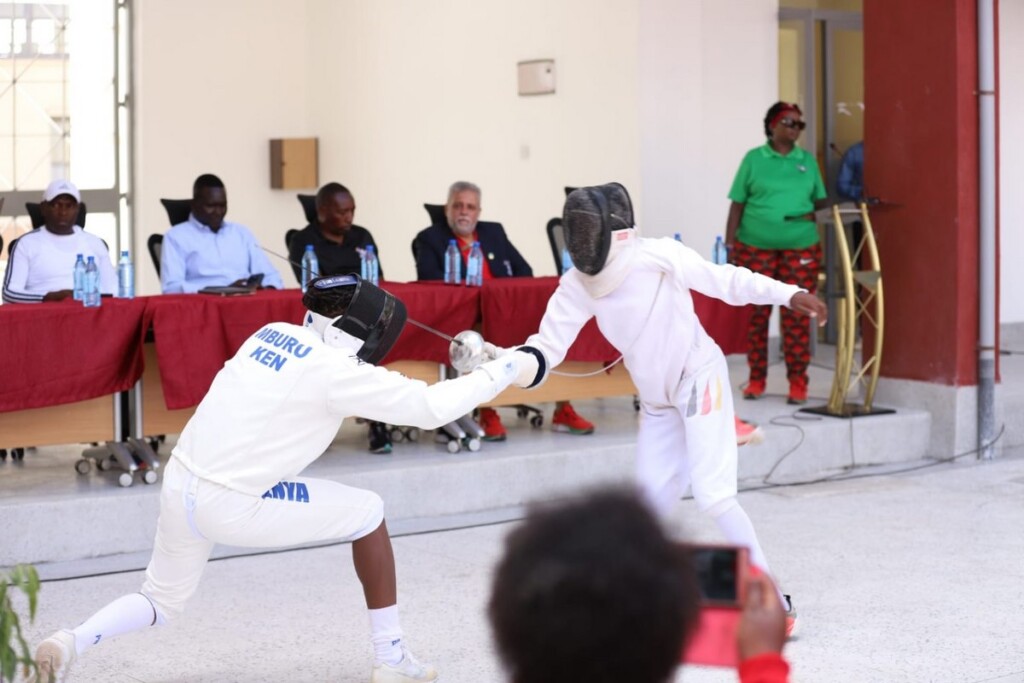

Wanyoike said that they use their “enthusiasm and obsession” to compensate for the lack of high-quality equipment, especially when competing with other nations—like in the African Olympic Qualifiers in Algeria this year.
“Sometimes it is tough when it comes to competing with well-equipped international countries that are well organized, so what we do is just to move on with enthusiasm and obsession,” he told Africa News.
“We don’t complain that we do not have equipment, we just use what we got and put in the obsession and the enthusiasm and the passion combined, that’s what we do, we fence.”
Tsavora Fencing Club has a mentorship program called Mtaani, which provides training and guidance on how to cultivate virtues like integrity and discipline. Their 45 members are now beacons within their community.
WATCH the story below from Africa News…
SHARE This Unlikely Haven For The Classic Sport With Your Friends…
How Singapore Became an Unexpected Stronghold for a Critically Endangered Bird

From the sprawling urban city-state of Singapore comes the unlikely story of a critically endangered songbird and a dedicated group of environmentalists helping it thrive as the population collapses overseas.
The straw-headed bulbul is a victim of its beautiful song, which has seen it extirpated from the wilds of Thailand, Myanmar, and Java as poachers capture it for the illegal songbird trade.
But as early as 1990, conservationists, birdwatchers, and government workers in Singapore have taken action on this species’ behalf.
“Whenever I hear its resonant, bubbly song, the forest seems to erupt with life,” conservationist Ho Hua Chew told Smithsonian Magazine.
Because of men like Ho, the peripheral wetlands of Singapore, the offshore island of Pulau Ubin, and the large green spaces in the city state’s interior together play host to 600 straw-headed bulbuls.
Nature Society Singapore, of which Ho was a member, was the first to push for nature protections on Pulau Ubin, the site of an old granite quarry, where nevertheless a concentrated population of these birds could be found.
This resulted in a Nature Area designation for the island in 1993, achieved through advocacy and outreach among millions of Singaporeans.
Smithsonian lists this as an early victory in the history of environmentalism on the cramped peninsular city-state.
OTHER SINGAPORE NATURE: Singapore’s Plan to Plant 1 Million Native Trees Will Protect Species and Put a Park 10 Minutes From Every Citizen
After populations had fallen 50% over three generations, the bird was listed as “Endangered” on Singapore’s own Red Data Book, which tracks populations of every plant and animal in the country, the straw-headed bulbul was added to the Endangered Species (Import and Export) Act of 2006, a move which reversed the trend, even while populations were collapsing around Southeast Asia.
Today, there is a Straw-Headed Bulbul Working Group, co-led by the National Parks Board and the Nature Society Singapore, which ensures this beautiful warbling bird remains in tip-top condition.
MORE BIRD RESCUES: Rare Nocturnal Parrot Described as ‘the Holy Grail of Ornithology’ Finally Recorded by Rangers in Remote Desert
If it were not for the incredible momentum that the work to conserve this bird has had over the years, its future would be alarmingly uncertain. Today, Ho believes that as the Working Group ensures the genetic diversity among the birds is in good shape, and the populations are increasing, the Singaporean straw-headed bulbuls may one day be the only population to draw from to restore populations elsewhere.
LISTEN to its song below…
SHARE This Unlikely Safe Haven For This Beautiful Songbird…
“Success is the sum of small efforts, repeated day in and day out.” – Robert Collier
Quote of the Day: “Success is the sum of small efforts—repeated day in and day out.” – Robert Collier
Photo by: Christian Holzinger
With a new inspirational quote every day, atop the perfect photo—collected and archived on our Quotes page—why not bookmark GNN.org for a daily uplift?
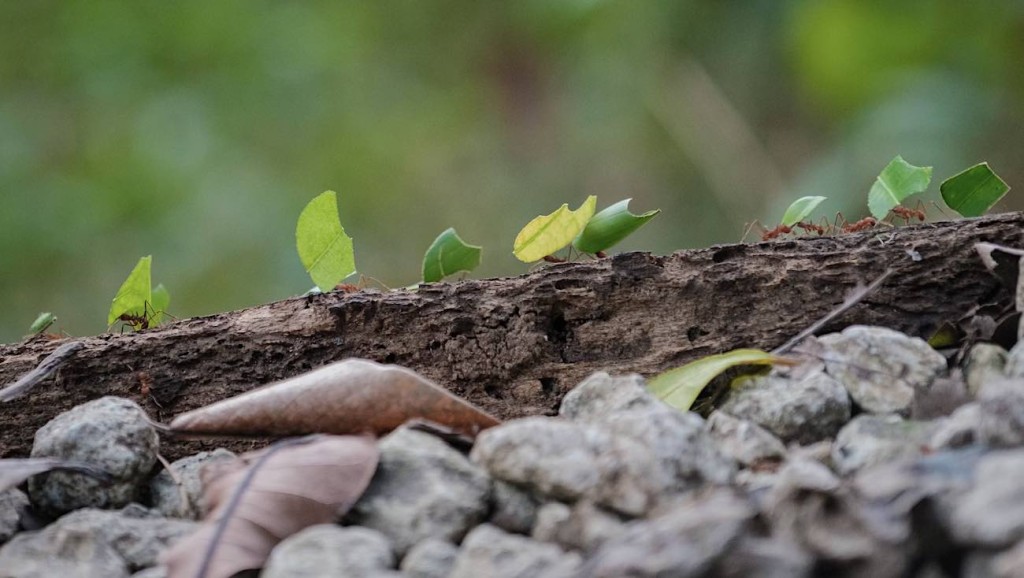
Good News in History, April 3
Happy Birthday to Dame Jane Goodall who turns 90 years old today. The beloved British primatologist first observed chimpanzees creating tools in 1960 (and 2 years earlier had been a secretary). It was the first time that an animal was observed to modify an object to create a tool for a specific purpose. She studied at Cambridge, became Dr. Jane Goodall, and put forth another unconventional idea for the time: “It isn’t only human beings who have personality, who are capable of rational thought [and] emotions like joy and sorrow.” READ more about her work… (1934)
Small Town Grocer’s Easter Egg Mistake is Turned into Inspiring National Charity Drive Raising Thousands

On an island off the coast of an island, a local grocer’s big error turned into a successful national charity event.
Dan Dafydd wanted 80 chocolate Easter eggs for the shelves at Sinclair General Stores on Sanday, one of the Orkney Islands, but accidentally ordered 80 cases of Easter eggs, totaling 720 confectionaries for a total island population of 500.
Wondering what he was going to do with the excess, his heart overtook his mind, and decided to raffle off groups of 100, with proceeds going to the Royal National Lifeboat Institution, (RNLI) the largest of the lifeboat services operating around the coasts of the British Isles which rescue dozens of people and vessels every year.
It proved to be a huge hit on Sanday, with £3,000 being raised to win batches of 100 eggs. It was so popular that in the ultimate irony, Dafydd had to order more chocolate eggs.
“We actually took a delivery of eggs yesterday because we ran out. We needed to buy more in the end. People have wanted them signed and all sorts,” said Mr. Dafydd to the Guardian.
“Once word spread a bit and I was invited to talk on local radio, I thought ‘it’s not bad enough to be a laughing stock on this island, but to be one all over Orkney.”

From the shores of Albion, it carried across world media, with the grocer soon receiving stacks of letters from people as far afield as Singapore writing to say how inspirational he was.
OTHER STORIES LIKE THIS: College Project Sparks Student to Start Orphanages for Homeless Kids in Philippines: ‘Why haven’t I started this?’
Many of the chocolate eggs were manufactured by Nestlé, who contacted Mr. Dafydd with the proposal that they would match any donations received for the RNLI up to £10,000 with the aim of raising £20,000 by Easter Sunday.
“It’s incredible to see how a simple mistake can turn into an opportunity to make a positive impact,” said Beth Lucas, the marketing director for confectionery at Nestlé UK & Ireland in a statement. “Together, we aim to raise up to £20,000 for the RNLI and contribute to the invaluable work they do.”
MORE UNORTHODOX FUNDRAISING: Man Joked About Throwing a Walmart Christmas Party and Thousands RSVPed–So He Made it a Huge Toy Drive
Dafydd said that even without the help of Britain and Nestlé the immediate community on the Orkneys had purchased so many raffle tickets that they won 300 of the eggs, showing how close-knit and big-hearted his local community is.
SHARE This Man’s Fortuitous Error And The Amazing Response…























